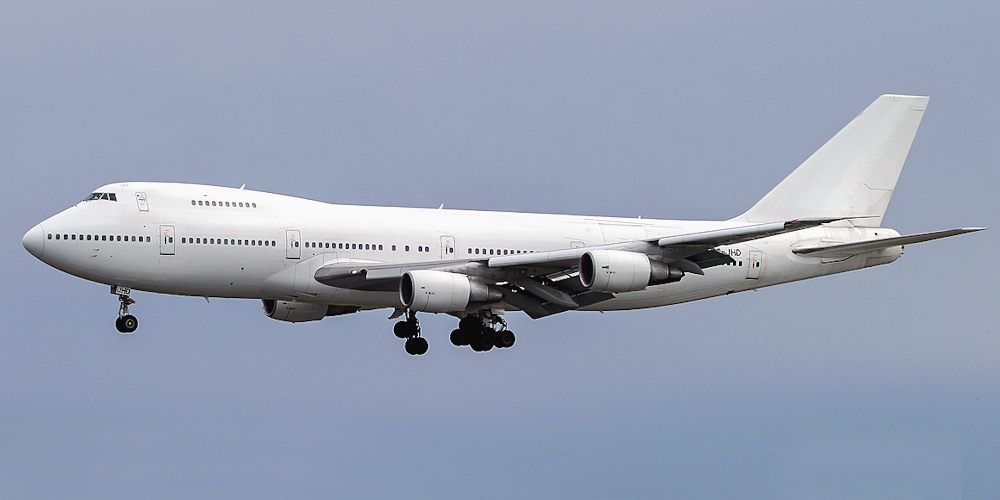Table Of Content

This is because a heavier aircraft should fly faster to generate the required lift at the most efficient lift coefficient. ECON speed will also be higher at higher altitudes because the density of the air is lower. The cruising altitude of an aircraft depends on its type, size, performance capabilities, and the specific flight conditions. Larger commercial aircraft like the 747 generally fly at higher cruising altitudes, while smaller regional aircraft may operate at lower altitudes. During takeoff and landing, a 747 flies at relatively lower altitudes compared to its cruising altitude. This is necessary to ensure proper acceleration during takeoff and a gradual descent for landing.
What happens if a 747 fails to reach its cruising altitude?
The reason for the Boeing models’ ability to achieve its cruise speed majorly came from the GEnx engine. It is among the world’s most fuel-efficient, quietest, and cleanest turbofan engines. It can be adjusted due to changing weather conditions, air traffic control instructions, or other factors. Pilots continuously monitor the flight and communicate with air traffic controllers to optimize the flight path and deliver a safe and comfortable journey for all aboard.
How Fast Does A Boeing 747 Fly? Takeoff & Landing Speed
Firstly, it allows the aircraft to avoid any potential obstacles such as mountains or tall buildings during takeoff. Secondly, it ensures the aircraft is in a stable and favorable air mass for smooth flying. Lastly, it maximizes fuel efficiency, as flying at higher altitudes reduces air resistance, resulting in lower fuel consumption.
Propeller aircraft
Or if the wind forecast was wrong, you may decide to fly lower at a different speed. The 787 Dreamliner (ZA001) and Intercontinental (RC001) test airplanes fly side-by-side over Washington state. By working together with customers and applying the innovative new technologies of the 787 Dreamliner, Boeing was able to create the family. In fact, the designation was chosen to show the technology connection between the 787 and the new 747. See all of NYC's landmarks from temperature-controlled indoor seats or our huge outdoor deck.
Airliner proposal
This range is determined by factors such as air traffic control instructions, weight of the aircraft, and weather conditions. The 747 is designed to operate most efficiently at higher altitudes, typically ranging from 35,000 to 45,000 feet. At higher altitudes, the air becomes thinner, which reduces drag and increases fuel efficiency. Additionally, flying at higher altitudes helps to avoid obstacles like mountains and weather disturbances.
The strangest Boeing 747 modifications that actually flew - AeroTime
The strangest Boeing 747 modifications that actually flew.
Posted: Thu, 02 Feb 2023 08:00:00 GMT [source]
On long-haul flights, the pilot may ask air traffic control to climb from one flight level to a higher one, in a manoeuvre known as a step climb. Air traffic control regulations and other factors may require the aircraft to climb in stages, with each stage reaching a new assigned altitude. Additionally, climbing gradually allows the aircraft’s systems and passengers to adjust to changes in air pressure. Rolls-Royce followed 747 engine production with a launch order from British Airways for four aircraft. The option of RB B engines was announced on June 17, 1975.[148] The -200 was the first 747 to provide a choice of powerplant from the three major engine manufacturers.[165]In 1976, its unit cost was US$39M (208.8M today).
Can a 747 fly at any altitude?
The Boeing 747 can increase its velocity by using these jet streams because of its capacity to fly at high altitudes. Pilots use meteorological data to meticulously arrange their itineraries so they can air travel on these unseen sky lanes. In addition to cutting down on journey time, this deliberate usage of jet streams increases the Boeing 747’s overall speed and efficiency. If a plane accidentally goes above its designated cruising altitude, the pilot will typically descend back to the correct altitude. This could be due to an autopilot or human error, or a temporary deviation for air traffic control instructions.

Into service and further development
This is primarily due to the thinner air, which results in less drag and improved fuel efficiency. The engines of the aircraft operate more efficiently at higher altitudes, allowing for reduced fuel consumption. This is one of the reasons why airliners prefer cruising at higher altitudes whenever possible. This can occur due to air traffic control instructions, weather conditions, or changes in the aircraft’s weight or performance requirements.
Additionally, the fuselage has been modified to provide the commercial aircraft with the best conditions possible for effective flying behavior. If you make a 80Nm flight hop between two airports you will never reach cruise speed. The altitude at which a 747 cruises does not have a significant impact on passengers’ comfort.
Additionally, if the air is denser due to high humidity or low temperatures, the ascent might take a bit more time. Nevertheless, modern 747s are equipped with powerful engines that allow for quicker climbs, ensuring a smooth and efficient journey for passengers. The cruising altitude of a 747 is determined based on various factors, including the distance of the journey, weather conditions, and air traffic control restrictions. Pilots and dispatchers calculate the optimal cruising altitude considering fuel efficiency, wind patterns, and other variables to ensure a safe and efficient flight. Flying at higher altitudes reduces fuel consumption for aircraft like the 747.
In the rare event that a 747 fails to reach its designated cruising altitude, the pilots will assess the situation and determine the appropriate course of action. They may decide to continue climbing or adjust the flight plan based on safety considerations and performance limitations. Modern aircraft are equipped with multiple redundancies and safety features to handle unexpected situations. At first glance, a Boeing 747 might seem like a massive machine that takes a considerable amount of time to reach cruising altitude. However, due to its exceptional engineering and powerful engines, the 747 surprises everyone with its remarkable ascent speed.
All aircraft - Microsoft Flight Simulator 2020 - Shacknews
All aircraft - Microsoft Flight Simulator 2020.
Posted: Tue, 25 Aug 2020 07:00:00 GMT [source]
The specific altitudes during takeoff and landing can vary depending on factors such as runway length, aircraft weight, and airport regulations. The plane soars through the air at extraordinary speeds thanks to a combination of strong engines, clever utilization of jet streams, and aerodynamic brilliance. This renowned Boeing commercial airplane not only represents the peak of commercial aviation engineering but also enthralls us with its breathtaking speed as it easily travels great distances.
By analyzing these factors, pilots can select the most optimal cruising altitude that ensures a safe and efficient flight for the passengers and crew. The ascent time of a 747 is affected by various factors, including its weight, altitude, and weather conditions. When the aircraft is fully loaded, it takes a little longer to climb to the desired cruising altitude.
The descent to the correct altitude ensures that the aircraft remains within the designated airspace and follows the necessary flight regulations. In exceptional circumstances, a 747 may need to fly above its designated cruising altitude. This could be due to air traffic control instructions, avoiding severe weather, or other factors affecting the safety and efficiency of the flight. However, such deviations from the designated cruising altitude are typically temporary and occur on a case-by-case basis. Firstly, flying at higher altitudes allows for smoother flying conditions as it helps to avoid turbulence and bad weather. Secondly, the air at higher altitudes is less dense, which reduces drag and increases fuel efficiency.
It has a pronounced 37.5° wing sweep, allowing a Mach 0.85 (490 kn; 900 km/h) cruise speed, and its heavy weight is supported by four main landing gear legs, each with a four-wheel bogie. Commercial or passenger aircraft are usually designed for optimum performance around their cruise speed (VC) and cruise altitude. Factors affecting optimum cruise speed and altitude include payload, center of gravity, air temperature, and humidity. Cruise altitude is usually where the higher ground speed is balanced against the decrease in engine thrust and efficiency at higher altitudes.

No comments:
Post a Comment